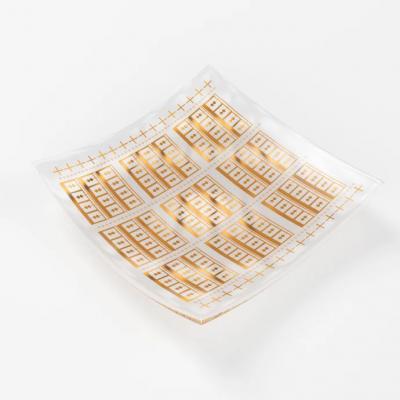by Roni Peleg
https://www.graphene-info.com/graphene-based-flexible-terahertz-detector-developed-chalmers-team
Researchers at Chalmers University have developed a flexible detector for terahertz frequencies (1000 gigahertz) using graphene transistors on plastic substrates. It is said to be the first of its kind, and can extend the use of terahertz technology to applications that require flexible electronics, like wireless sensor networks and wearable technology.

At room temperature, the translucent and flexible device detects signals in the frequency range 330 to 500 gigahertz. The technique can be used for imaging in the terahertz area (THz camera), but also for identifying different substances (sensor). It may also be of potential benefit in health care, where terahertz waves can be used to detect cancer. Other areas where the detector could be used are imaging sensors for vehicles or for wireless communications.
The Chalmers researchers' work is regarded as an important step forward for graphene in the terahertz area, and a breakthrough for high performance and cheap flexible terahertz technology. The research on the terahertz detector has been funded by the EU Graphene Flagship, the Swedish Foundation for Strategic Research (SSF), and the Knut and Alice Wallenberg Foundation (KAW).
In March 2017, researchers from the University of Geneva, working with the Federal Polytechnic School in Zurich (ETHZ) and two Spanish research teams, came up with a technique based on the use of graphene that allows for terahertz waves to be controlled accurately. In April 2016, scientists at the Swiss EPFL and the University of Geneva took advantage of the fact that graphene is both transparent and opaque to radiation to develop a microchip that filters out unwanted radiation. The device, called an optical isolator, works in the terahertz gap.
Source:

No comments:
Post a Comment